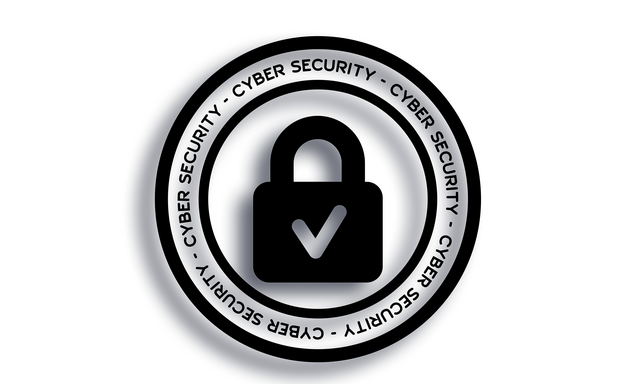Strengthening cybersecurity demands more than reactive fixes—it requires embedding protection throughout a product’s entire lifecycle. Product Lifecycle Management (PLM) offers a structured approach to secure data, streamline collaboration, and anticipate vulnerabilities from design to disposal. Leveraging PLM not only improves development efficiency but also builds resilient products that withstand emerging cyber threats. This integration transforms security from an afterthought into a core business advantage.
Core Functions and Strategic Benefits of Product Lifecycle Management
Modern Product Lifecycle Management (PLM) orchestrates every stage a product experiences, creating a unified digital backbone that connects teams and streamlines processes. At its core, PLM centralizes critical information and decisions, from the earliest concept sketches to final retirement. The process covers multiple distinct lifecycle stages: concept, design, manufacturing, service, and disposal. At each step, PLM enables seamless handovers and data continuity—minimizing costly errors and unplanned downtime. Discover now more information.
Also read : How Will Artificial Intelligence Transform UK Computing?
Understanding the product lifecycle: Companies begin at the concept stage, vetting ideas and researching market need before progressing to detailed design, where digital tools like CAD refine innovation. Manufacturing leverages data-driven planning and quality assurance functions, followed by launch and distribution, which synchronize supply chains and manage compliance. Service and end-of-life stages use PLM to analyze feedback, schedule maintenance, and ensure sustainability through responsible disposal or recycling.
Strategically, PLM strengthens collaboration and compliance, safeguarding intellectual property and traceability. Teams work with a single source of truth, ensuring fast, evidence-based responses to changes or issues. With lifecycle management software, businesses improve speed-to-market, reduce costs, and enhance customer satisfaction—all while maintaining a robust security and compliance posture.
Also to discover : Maximize efficiency with ai employees for your business
Integrating Cybersecurity into Every Stage of the Product Lifecycle
Embedding cybersecurity from design to disposal for proactive risk reduction
PLM data security is most robust when cybersecurity is embedded from the earliest concept stage. Using lifecycle risk management techniques, security controls and requirements are not left for final compliance checks—they’re built into the product’s DNA. This proactive approach, guided by product lifecycle analytics, closes gaps that attackers often exploit, minimizing the attack surface before manufacturing or launch begins. Security updates and vulnerability scans become part of lifecycle change management, ensuring every iteration is secure by design and responsive to emerging threats.
How PLM platforms provide traceability, compliance, and lifecycle audit trails
Lifecycle management software centralizes and logs every design choice, component update, and process change. These platforms deliver full traceability: organizations can pinpoint when and where a cybersecurity feature was added—or updated—supporting both internal governance and external compliance. Audit trails created within PLM data security infrastructure allow product teams to demonstrate regulatory alignment while refining their lifecycle risk management techniques.
Managing supply chain risks and secure product decommissioning with PLM
From sourcing to disposal, supply chains present unique cyber risks. Product lifecycle analytics help teams assess the vulnerability of third-party suppliers and automate due diligence. When a product reaches its end of life, lifecycle change management ensures data destruction, component recall, and responsible disposal, all monitored by lifecycle management software to keep sensitive information locked tight.
Leading PLM Software Solutions and Tools for Secure Lifecycle Management
Lifecycle management software transforms how companies drive product innovation, efficiency, and security. Today’s best PLM software solutions like SAP PLM, Siemens Teamcenter, Jira Product Discovery, and Oracle Agile streamline every product lifecycle stage—centralizing data and making collaboration straightforward for cross-functional teams. A thorough PLM tools comparison highlights that top solutions include integrated product data management, advanced role-based access, and customizable workflows, each supporting precise control from design through service phases.
Cloud-based product lifecycle management is now a standard. SaaS PLM adoption addresses both cybersecurity and real-time collaboration needs. With secure cloud infrastructure, global teams can work simultaneously, keeping sensitive information protected and reducing risks tied to outdated local files or fragmented data. These platforms simplify compliance tasks and supply chain monitoring, making remote coordination more efficient and secure.
Effective lifecycle management software must also enforce cybersecurity standards throughout the supply chain. Key features are traceability, secure document control, frequent security updates, and automation of compliance certifications. Robust PLM software vendors overview reveals that leading solutions help organizations respond quickly to evolving risks, centralize critical metrics, and provide seamless project delivery across all lifecycle stages.
Emerging Trends and Best Practices in PLM and Cybersecurity Integration
Digital transformation in product lifecycle has accelerated the integration of AI, IoT, and machine learning into modern PLM solutions. These technologies empower organizations to detect and analyze security threats across the product lifecycle, strengthening lifecycle knowledge management. AI-driven analytics pinpoint potential vulnerabilities before products reach the market, while IoT connectivity ensures real-time monitoring of product health and risks. This advanced data flow fuels a holistic lifecycle management approach, allowing for dynamic responses and adaptive security measures.
In PLM in agile product development, cross-functional teams leverage PLM-driven collaboration to foster a culture of cyber resilience. Collaborative platforms centralize updates from diverse disciplines, generating a single source of lifecycle knowledge management. This transparency helps teams react quickly to emerging threats and share insights, balancing speed with meticulous oversight—a key requirement in evolving trends in product lifecycle management.
To gauge PLM effectiveness in cybersecurity, organizations now prioritize lifecycle performance metrics such as mean time to resolution, traceability of design changes to address vulnerabilities, and compliance rates with industry standards. By routinely analyzing these metrics, businesses adjust their lifecycle management strategies, reinforce PLM best practices, and sustain a cycle of innovation without compromising security.










